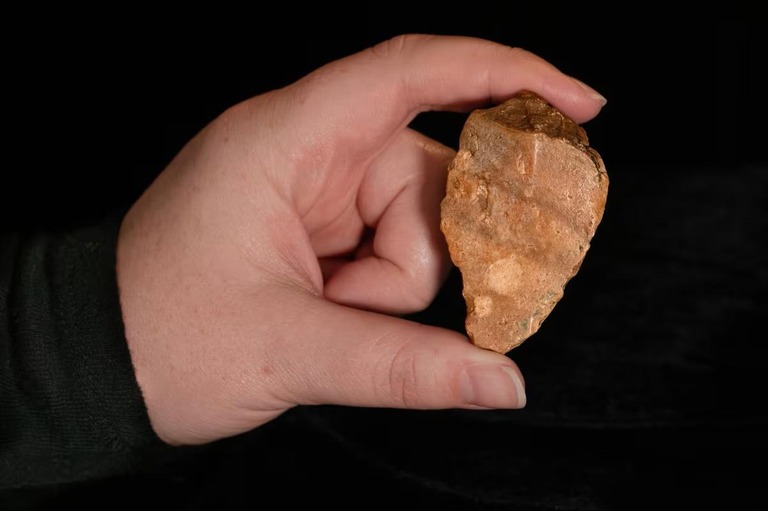インドネシアのスラウェシ
島で、とても
古い
石器が
見つかりました。
Very ancient stone tools have been discovered on Sulawesi Island in Indonesia.
この
石器は
104万年前から
148万年前のものだと
考えられています。
These tools are thought to date from 1.04 million to 1.48 million years ago.
これは、スラウェシ
島で
人類が
住んでいた
一番古い
証拠です。
This is the oldest evidence of human presence on the island of Sulawesi.
スラウェシ
島は「ワラセア」と
呼ばれる
地域にあり、アジアとオーストラリアの
間にあります。
Sulawesi Island is located in the region between Asia and Australia known as Wallacea.
くのフローレス
島では、
昔「フローレス
原人」と
呼ばれる
小さい
人類が
住んでいたことが
分かっています。
On the nearby island of Flores, it is known that a small-bodied human species called the Flores people once lived there long ago.
このフローレス
原人は「ホビット」とも
呼ばれています。
This Flores human is also known as the Hobbit.
の
発見で、スラウェシ
島にもフローレス
島と
同じ
時期か、それより
前に
人類がいたかもしれないと
考えられています。
This discovery has led researchers to believe that humans may have appeared on Sulawesi Island at the same time as, or even earlier than, on Flores Island.
たちは、これらの
石器がどのように
作られたのか、
誰が
作ったのかを
調べています。
Researchers are investigating how these stone tools were made and who made them.
は
大きな
石を
割って
作られたもので、
切ることや
削ることに
使われていました。
These tools were made by breaking large stones and were used for cutting and carving.
スラウェシ
島では、
今まで
19万4000年前の
人類の
遺物しか
見つかっていませんでしたが、
今回の
発見はもっと
古いものです。
Previously, only human remains from about 194,000 years ago had been discovered on Sulawesi Island, but this new finding is much older than that.
しかし、
石器を
作った
人の
骨や
化石は
未だ
見つかっていません。
However, the bones and fossils of the people who made these tools have not yet been discovered.
スラウェシ
島のような
島に
人類がどうやって
来たのかも、
未だよくわかっていません。
It is still unclear how humans reached islands such as Sulawesi.
は、
昔の
人類が
偶然に
海を
渡って
島に
来たのではないかと
考えています。
Researchers believe that ancient humans may have accidentally crossed over to this island.










